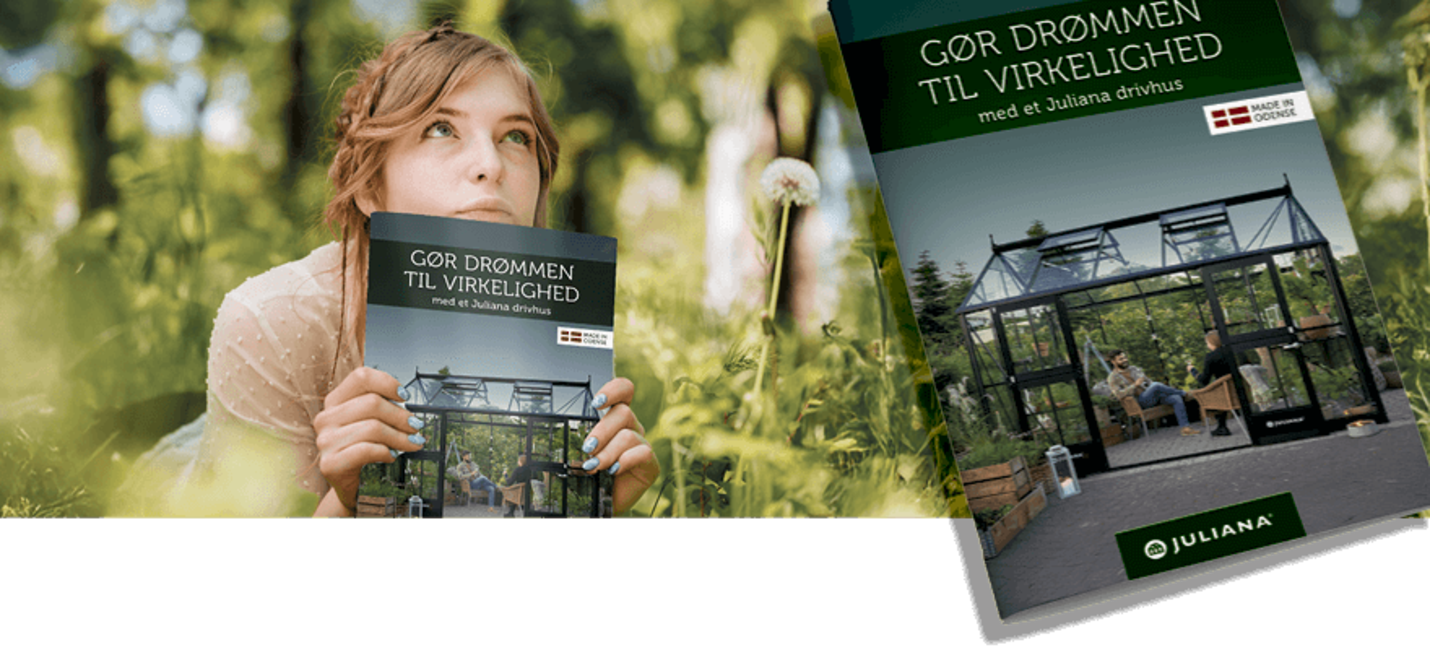Skrevet af Juliana 11 May 2023 09:55
Etablering af Urban City Greenhouse
The shelves make sure the space is utilized optimally, and the plants are getting enough light
(Photo: @kuestenbalkon)
Text & Photo: @kuestenbalkon
My urban city greenhouse has been standing on my east-facing balcony in Kiel for 2 months now, and during this time. Although it may appear small with its 0,32m2 compared to other Juliana greenhouses, it is a storage miracle. The enclosed shelves allow for vertical utilization of the limited space, enabling me to fit 20 pots in the greenhouse.
In the beginning, the young plants require a strong root system, which makes it necessary to keep the soil moist at all times. To prevent unsightly water stains under the pots resulting from frequent watering, I have placed trays on the wooden boards. As the plants grow, I gradually acclimate them to moderate water amounts, ensuring they can eventually endure a couple of days without watering, allowing me to remove the trays.
On the bottom part, where there is less sunlight at this time of year due to the positioning of the balcony railing, I have stored my planting gear and care products. Since the half-covered balcony often experiences heavy rainfall, these items require protection against moisture. Additionally, the space can be utilized for textiles like cushions or a blanket, pots, or a box containing garden tools. However, as the year progresses, the sun will also reach the bottom shelve of the greenhouse, making it possible to place plants there as well.
From the window sill to the balcony
Regardless of whether planting is done on a balcony or in a garden, the cultivation of plants always follows a similar process. Depending on the type of plant, seeds can be sown directly in raised beds in the spring (such as arugula, lamb's lettuce, spinach, parsley, chives from March), while other seeds require warm temperatures indoors to germinate (such as chili peppers, bell peppers, cape gooseberries, eggplants from February).
As I have quite a lot of plants on my 12m2 balcony, I share my windowsill with them from February to the middle of May. Only after the last frost night in May can the frost-sensitive plants be placed in the bed to avoid damage.
Of course, it is also possible to purchase young plants at garden centres. However, the selection will be more limited and expensive compared to growing from seeds.
If you don't want to navigate around your plants inside the apartment for months, you can speed up the propagation process with the help of a greenhouse, for example. There, the plants can already move outside from April. The use of a cold frame or plant fleece that is placed over the bed or a bucket in spring can also protect the plants from the cold.
The greenhouse can be used as a kindergarten for plants
In March, I placed cabbage and salad plants in my Urban City greenhouse. In April, I added squash plants and a selection of flowers such as cornflowers, marigolds, and tagetes. As soon as the first cabbage plants were placed in the beds in mid-April, I introduced pumpkin plants, cucumbers, and peppers into the greenhouse because there was no longer any frost in Kiel.
It is a good idea to monitor the weather. Although the greenhouse glass retains heat during the day, the plants can still be affected by frost and potentially die at low temperatures. If I'm not absolutely sure whether it's too cold or not, I am extra cautious and bring the plants indoors.
Only after experiencing a continuous 24 hours without cold in May, where the plants can be left unprotected, will I set up the greenhouse for the summer. Alongside other plants cultivated throughout the year, I will also grow mini melons and potted butternut squash in the greenhouse, as they haven't been able to withstand the cold breeze from the Baltic Sea in the past year.
Selection of plants and sorts for a balcony
I have decided to use vertical raised beds because of my long but very small balcony. It is especially challenging to find space for plants that have a large root system and require large buckets, or plants that tend to spread out. Therefore, I focus on cultivation in pots with hanging and potted tomatoes (such as Balconi Yellow), butternut squash, chili peppers (such as Kordara), as well as smaller varieties like dwarf eggplants or snack cucumbers.
Additionally, many fruit and vegetable plants grow well in space-saving locations such as roof gutters, trellises, or chains of lights since they utilise the vertical space. Examples include nasturtium, Mexican mini cucumbers, and climbing strawberries. Plants like strawberries, beets, spinach, and salad do not have deep roots and can thrive in flat raised beds or balcony flower boxes.
It is important to remember that plants cannot take care of themselves, and during the summer, they rely on regular watering, sufficient nutrients, and space for their roots. The larger the plant, the more water it needs. The more demanding the plant, the more time and attention it requires. Therefore, when cultivating plants in the spring, I am already considering which needs I can fulfill and which ones I cannot.





